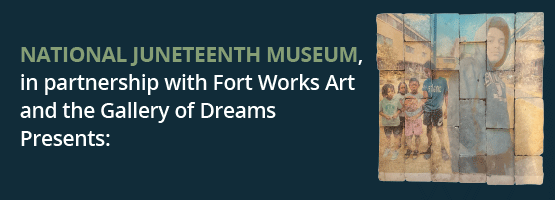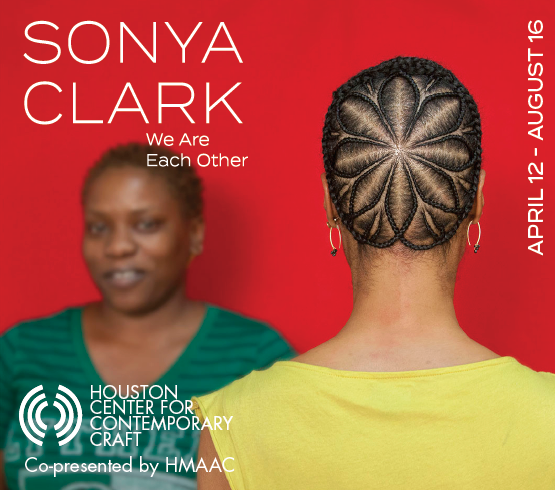There’s a popular and poignant phrase used to describe the “what” at the core of Dawoud Bey’s artwork: what it means to represent America with a camera.
“Photography has taught me that the experience of both people and places is entirely subjective, with no one meaning or one way of viewing things,” he says. “My photographs have always been about my ideas in relation to the things I’m interested in.”
Bey’s relationship with photography began in 1968, at the age of 15, when his grandmother gave him a camera. The following year, he saw the exhibition Harlem on My Mind at The Metropolitan Museum of Art in New York. Despite several Black artists living and working in Harlem at the time (Faith Ringgold, for one), the exhibition did not include a single artwork, only reproductions such as newspaper clippings, timelines, and photographs. Protests ensued, increasing awareness of the lack of representation and resulting in a group of artists forming the Black Emergency Cultural Coalition (BECC).
Describing himself as a socially and politically engaged young person, Bey wanted to see what the museum exhibition controversy was about. So he made his way into Manhattan, to The Met, from his home in Queens, New York. It was the first time he had seen an exhibition of photos—in any context—of ordinary African Americans, an experience that changed his life and launched his life’s work.
Bey continues to participate in a rigorous process of making and engaging, creating “a physical thing that is equal to the idea,” rather than merely an illustration of that idea. For example, The Birmingham Project pays tribute to the young victims of the 1963 16th Street Baptist Church bombing in Birmingham, Alabama. The diptychs present a portrait of one youth, the same age as one of the victims, alongside a portrait of an adult 50 years older, the age the victims would be had they survived (or had the bombing never occurred). The series makes real and visible the tender, potential lifespan of those young churchgoers.
In 2017, Bey was awarded the MacArthur Foundation “Genius” Fellowship; he has also been awarded fellowships from United States Artists, the John Simon Guggenheim Memorial Foundation, and the National Endowment for the Arts, among others. And now, Dawoud Bey: An American Project, which spans the breadth of his career, sets the stage for looking back and moving on.
“A retrospective or survey exhibition is an interesting thing. It seems to imply a ‘summing up’ even as one is still in the midst of actively working,” says Bey. “So it kind of demands that you look back even as the most urgent thing is to face forward and keep working. It’s a gratifying experience to be sure. It’s a rare opportunity to see how one’s work has taken shape over several decades.”

1 ⁄5
Dawoud Bey, A Boy In Front of the Loew’s 125th Street Movie Theater, Harlem, NY, from Harlem, U.S.A., 1976, gelatin silver print (printed 2019), collection of the artist, courtesy of Sean Kelly Gallery, New York; Stephen Daiter Gallery, Chicago; and Rena Bransten Gallery, San Francisco, © Dawoud Bey.

2 ⁄5
Dawoud Bey, A Girl with a Knife Nosepin, Brooklyn, NY, 1990, inkjet print (printed 2019), collection of the artist, courtesy of Sean Kelly Gallery, New York; Stephen Daiter Gallery, Chicago; and Rena Bransten Gallery, San Francisco, © Dawoud Bey.

3 ⁄5
Dawoud Bey, Girls, Ornaments, and Vacant Lot, from Harlem Redux, 2016, inkjet print (printed 2019), collection of the artist, courtesy of Sean Kelly Gallery, New York; Stephen Daiter Gallery, Chicago; and Rena Bransten Gallery, San Francisco, © Dawoud Bey.

4 ⁄5
Dawoud Bey, A Man in a Bowler Hat, Harlem, NY, from Harlem, U.S.A., 1976, gelatin silver print (printed 2019), collection of the artist, courtesy of Sean Kelly Gallery, New York; Stephen Daiter Gallery, Chicago; and Rena Bransten Gallery, San Francisco, © Dawoud Bey.

5 ⁄5
Dawoud Bey, Three Women at a Parade, Harlem, NY, from Harlem, U.S.A., 1978, gelatin silver print (printed 2019), collection of the artist, courtesy of Sean Kelly Gallery, New York; Stephen Daiter Gallery, Chicago; and Rena Bransten Gallery, San Francisco, © Dawoud Bey.
“Being an artist is about exercising a kind of freedom, so the notion of responsibility can be a heavy one, as it could imply putting restrictions on an artist, which is never a good thing. My own feeling is that I have a responsibility to myself to make work that contributes something meaningful to the ongoing conversation about what it means to be human and alert in the 21st century, to make work that provokes the kinds of questions that allow viewers to be more critically present in the world, to make the things that I care about meaningful to them,” he says.
“I also feel a kind of responsibility to add something to the ongoing history of ideas and representations around the Black subject that are not simplistic or one dimensional, but that bring real depth and resonance to the experience and meaning of Blackness in a visual and photographic form. In my earlier work I’ve tried to create a sense of rich interiority in the Black subject, to reveal them as deeply human, not just sociological props.”
—NANCY ZASTUDIL




